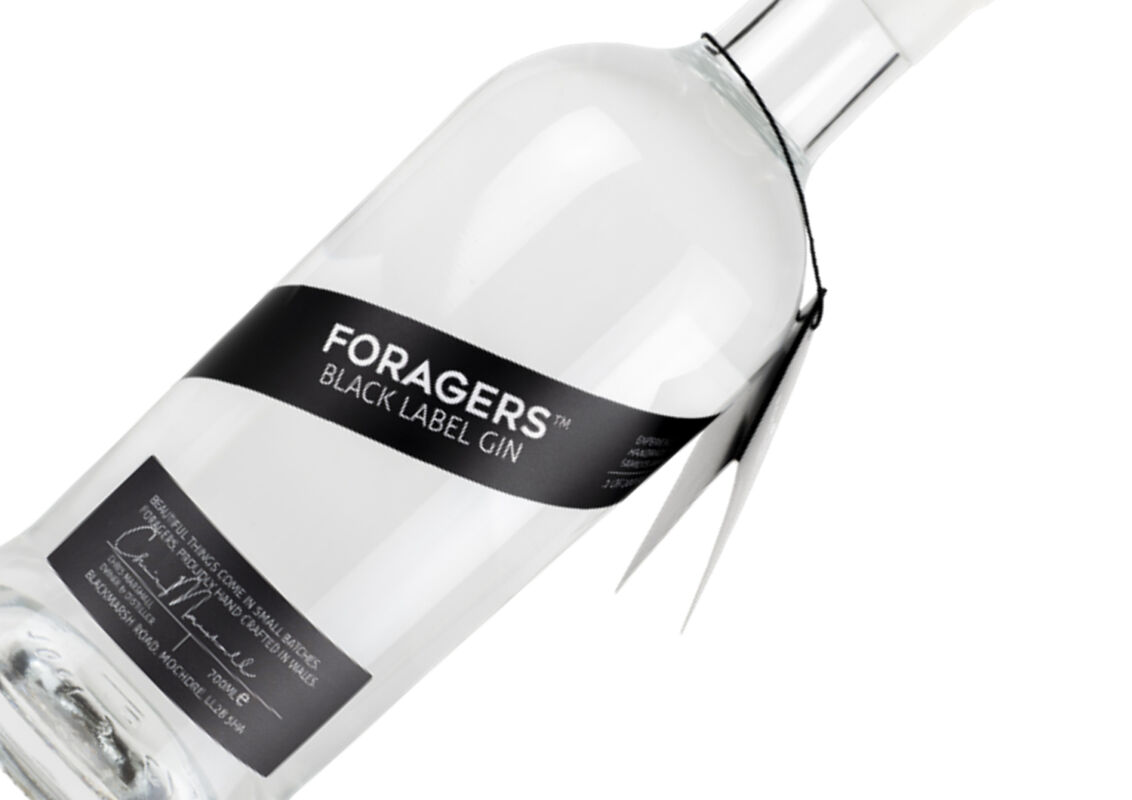Forager’s Gin

Forager’s Yellow Label Gin
Using six native botanicals, the award winning Forager’s Yellow label Gin takes its inspiration from
the soft sweetness of summer in the mountains. Pure waters crash down, whilst the gentle breeze
carry’s floral notes in the air.
TASTING NOTES
Super smooth, juniper-forward gin with beautiful notes of spice, pine, sweetness and
mountain floral notes.
PERFECT SERVES
Gin & Tonic: garnish with slice of apple
 | JuniperJuniper is part of the coniferous family and vary greatly in size and shape, from 60m trees to low-lying shrubs. Being part of the coniferous family, they are also evergreen, with sharp needle like leaves, and slow ripening cones (often mistakenly called berries). Their preference for soil type is also of interest, not appearing to prefer either acid or alkaline soils – just as long as it’s an extreme and therefore growing in several location in North Wales. |
 | Sea BuckthorneSometimes going by the name Sandthorne, Seaberry, or Swallowthorn, Sea Buckthorne in the UK predominately grows along the coastline, picking up a wonderfully, detectable salinity from the sea spray, and surviving in conditions that many other plants and trees wouldn’t. Whilst Sea Buckthorn has repeatedly gone going in an out of favor in the culinary world, to us it provides an invaluable source of warming citrus, akin to that of orange peel. |
 | AppleApples are just one of the many advantages of our climate. Typically we will use a blend of apples, concentrating on selecting varieties that deliver a soft sweetness, with a citrus bite. Of course there are a number of varieties that could be used to achieve this, but are preferred ones include Braeburn, Cameo, Cox and of course the UK favorite Royal Gala. |
 | ElderberryGenerally not effected by soil tye, pH levels and just wanting a little sunlight, Elder commonly grows near farms and homesteads and in the UK makes up a significant part of hedgerow planting: probably in part due to the ancient folklaw the elder tree was thought to ward off evil and give protection from witches. But then again other myths cite the opposite, and when full with fruit whiches would congregate in groups under the elder tree. |
 | Gorse flowersOpen windy, landscapes and mountainsides in North Wales, are at certain times of year, covered in these beautiful bright yellow Gorse flowers – often growing next to the brilliant purple of heather. Whilst we harvest gorse in the spring, when its flavors at there best, you will find one or two flowers on the bushes pretty much all year round. Hence the saying, ‘When Gorse Is Out of Bloom, Kissing Is Out of Season’. |
 | Bell HeatherTowards the end of the summer, these bright purple flowers bring a new color pallet to the mountains. Small low lying shrubs, perhaps only 15 -60cm tall with tall, thin stems and needle-like-leaves. |
Forager’s Black Label Gin
Forager’s Black Label Gin is all about the perfect balance of complexity, dryness and depth
of flavour, wrapped up as a refined and sophisticated classic. Contempary craftmanship meets
Classic London Dry.
TASTING NOTES
Massively juniper rich, with a gentle citrus under current and super smooth, buttery mouth feel.
The great juniper depth, and natural salinity from the inclusion of Sea Buckthorn give this gin
a finely balanced and beautifully long finish with a nice level of spice.
PERFECT SERVES
Gin & Tonic: garnish with orange zest
 | JuniperJuniper is part of the coniferous family and vary greatly in size and shape, from 60m trees to low-lying shrubs. Being part of the coniferous family, they are also evergreen, with sharp needle like leaves, and slow ripening cones (often mistakenly called berries). Their preference for soil type is also of interest, not appearing to prefer either acid or alkaline soils – just as long as it’s an extreme and therefore growing in several location in North Wales. |
 | Sea BuckthorneSometimes going by the name Sandthorne, Seaberry, or Swallowthorn, Sea Buckthorne in the UK predominately grows along the coastline, picking up a wonderfully, detectable salinity from the sea spray, and surviving in conditions that many other plants and trees wouldn’t. Whilst Sea Buckthorn has repeatedly gone going in an out of favor in the culinary world, to us it provides an invaluable source of warming citrus, akin to that of orange peel. |
Visit Forager’s website here;
